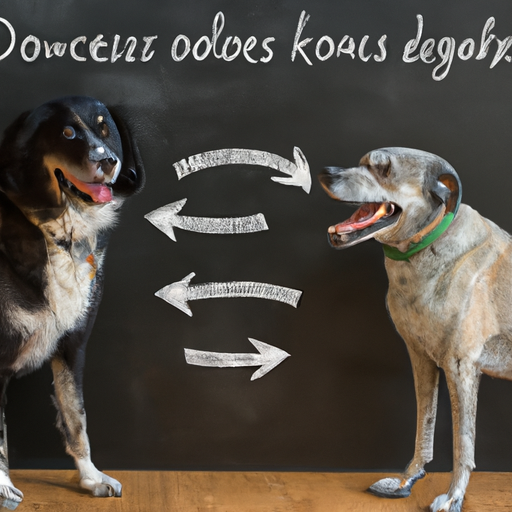Getting Started
First things first! When you’re trying to help two dogs like each other, it’s vital to understand that every dog has its unique personality. Just like humans, they have their likes and dislikes, and forcing a friendship may backfire.
- Patience is key: Dogs take time to get accustomed to new environments and companions.
- Observe their behavior: Before introducing them, observe both dogs’ behavior and temperament. This will give you insights on how to approach the introduction.
- Consult a professional: If you’re unsure about your dogs’ behavior, don’t hesitate to seek advice from a professional dog trainer or behaviorist.
Preparation: The Key to Success
Before you arrange the meeting, it’s important to prepare both dogs for the encounter.
- Exercise them: It’s always a good idea to exercise your dogs before the meeting. A tired dog is usually less likely to be aggressive or dominant.
- Neutral territory: Choose a neutral place for the meeting. This reduces the chance of territorial aggression.
- Leashes: Keep both dogs leashed for the initial introduction. This ensures you can maintain control if necessary.
The Introduction: First Impressions Matter
The introduction is a critical part of the process. Here’s how you can make it successful:
- Keep it calm: Keep the mood light and calm. Dogs pick up on human emotions, so if you’re anxious, they might become anxious too.
- Let them sniff: Allow the dogs to sniff each other. This is their way of getting to know each other.
- Observe their body language: Look out for signs of aggression or discomfort. If you notice any, separate them and try again later.
Building a Relationship: Patience and Consistency
Building a positive relationship between two dogs is an ongoing process. Remember:
- Consistent positive experiences: Regular, positive interactions can help establish a good relationship.
- Reward good behavior: Use treats and praise to reward your dogs when they interact nicely with each other.
- Limit their resources: Initially, avoid having toys or treats around as they may cause fights.
Handling Conflicts: Stay Calm and Assertive
Conflicts might arise, but don’t panic. Stay calm and assertive.
- Interrupt aggressive behavior: Use a loud clap or a water spray to interrupt any aggressive behavior.
- Separate them: If they continue to show aggression, separate them for a while.
- Seek professional help: If the aggression persists, consult a professional.
| Signs of Aggression | How to Respond |
|---|---|
| Growling | Interrupt |
| Snapping | Separate |
| Persistent staring | Interrupt |
Frequently Asked Questions
Q: How long does it take for dogs to get along?
A: There’s no set timeline. It depends on the dogs’ personalities and how consistent you are with their positive experiences.
Q: Is it normal for dogs to fight when they first meet?
A: Some mild scuffling or posturing can be normal, but if it escalates to real fighting, separate them and consult a professional.
Q: Can all dogs get along eventually?
A: While it’s possible for most dogs to learn to coexist or even become friends, in some cases, certain dogs may never get along due to their personalities or past experiences.
Remember, as a caregiver, your patience and understanding are the most vital factors in helping your dogs like each other. Happy bonding!



